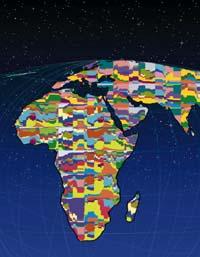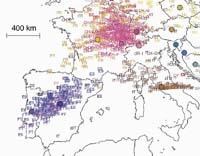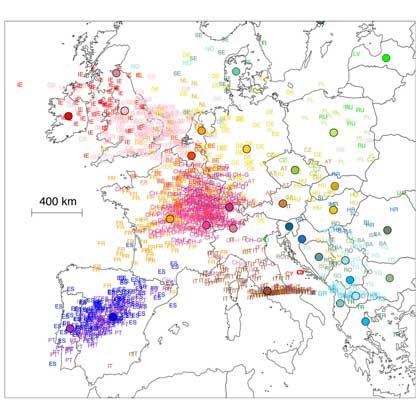Looking for individuality in genes
2008/03/31 Lakar Iraizoz, Oihane - Elhuyar Zientzia

All human beings are equal in 99.9% of the genome, that small percentage that remains gives individuality to each of them. To identify differences between individuals, the two groups sought differences of a single nucleotide in certain fragments of DNA, called SNP or mononuclear polymorphism.
These differences were sought in more than five hundred thousand fragments of DNA and all genomes were compared. They observed that from this comparison we can follow the geographical displacement of individuals and populations.
Migrations in gene
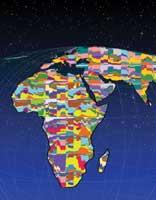
Each individual receives in the genome the footprint of his ancestors, where the changes occurred in many generations are accumulated. If someone moves from one place to another in the world, he carries the genome with him and gives it to his descendants with changes. In this way, the displacement of people can be followed by analyzing their changes in the genome.
Sometimes the changes are important, that is, the product that is generated when changing a gene is very different from the original one. People who have suffered this change will notice it somewhere in their body. On other occasions, however, changes in genes are very small, for example, a single nucleotide of the genome is modified. In these cases, the resulting product may vary or not (since several sequences can give the same product). When it does not change, that person does not affect anything, and that change only stays in the genome.
The analysis of both groups has shown that all the groups in the world are very similar and have affirmed that the ancestors of most people were in more than one continent to their current location.
Project 1.000 genomes
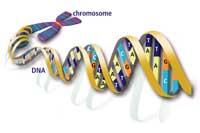
These gene studies, which have been recently published, are the most rigorous of all time, but will not last long, since at the end of January another ambitious project was launched: Project 1.000 genomes. As the name of the project itself indicates, they intend to completely sequence the genome of a thousand people.
In sequencing not only will they identify the differences of a single nucleotide, but they will also perceive specific rearrangements in genomes, disappearance of genomic fragments, duplications, etc.
They want to know the variability between human beings, that is, what it consists of that 0.1% that is different from each other, since this small part of the genome makes the sensitivity to individual diseases, the response to medicines or the reaction to environmental factors different.
In this project they will obtain the most complete map of the genetic variability they have achieved. However, more than one has questioned whether they will do it properly, since they consider that the time period they have established (three years) is too small and the amount they will invest (30-50 million dollars). It is undoubtedly the largest project launched for the moment, although it is to be seen if it will become the most ambitious project ever carried out. It is a matter of time.
Published in 7K.

Gai honi buruzko eduki gehiago
Elhuyarrek garatutako teknologia




